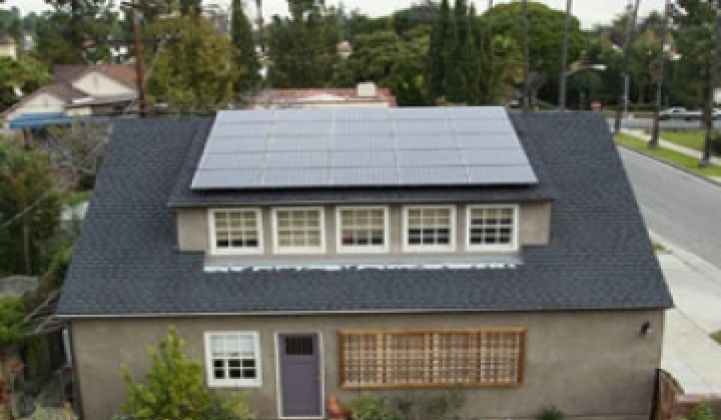SolarCity now puts First Solar's thin-film panels on 60 percent to 70 percent of its residential customers in the last four months, after it first began using the First Solar panels.
Although the thin-film panels aren't able to convert sunlight into electricity at the same rates as conventional crystalline silicon panels, they work just fine on residential rooftops, said Lyndon Rive, CEO of SolarCity, which claimed to be the largest residential installer in the country last year.
Conventional wisdom says thin-film panels are better suited for large spaces, such as the rooftop of a commercial building or on the ground of a large lot – not for the limited space of an average residential rooftop. Some residential installers don't offer thin-film panels.
"If they don't have the roof space or have high electricity costs, then we recommend Evergreen," said Rive, referring to panels made by Evergreen Solar in Marlboro, Mass.
Rive said consumers don't demand to install panels from a particular company. They want a system that suits their energy needs and looks nice. That is, the panels should blend into the roofs as much as possible. The thin, black panels are attractive to customers, Rive said.
SolarCity inked a deal to buy 100 MW of panels over five years from First Solar last fall and installed the first system last December. The agreement allows First Solar to enter the U.S. residential market. Historically, First Solar, based in Tempe, Ariz., has focused on the European market.
First Solar also happens to make panels more cheaply than many of its competitors. It has invested $25 million in Foster City, Calif.-based SolarCity, which raised an additional $5 million for the same round announced last October.
Rive said residential market demand is lower than last summer, but still doubled the installations his company did a year ago. SolarCity, which serves residential customers in California and Arizona, raises money from investors in order to finance installations for homeowners who lease rather than pay the entire upfront costs of buying and installing solar panels. The credit crunch has made it difficult to find willing lenders.
The company could finance 100 homes per month instead of hundreds of homes, he said. Earlier this week, SolarCity announced it had lined up a new pot of money from Greystone Renewable Energy Ventures to finance residential installations, though it declined to disclose the amount.
But the number of residential customers who buy a solar energy system outright has grown, thanks to a 30 percent federal tax credit that went into effect this January. The new tax credit was a vast improvement from the previous one, which capped the amount at $2,000. A 5-kilowatt system, which is the average size in California, costs roughly $30,000.
About 30 percent to 40 percent of SolarCity's residential customers now buy instead of lease their energy systems, Rive said. Before the tax credit was in place, the leasing program supported 95 percent of its residential business.
SolarCity also installs solar energy systems on commercial customers in California, Arizona and Oregon. The company plans to expand its service territories to the East Coast later this year or early next year, said Rive, who declined to disclose which states. He noted that New York, Massachusetts, Delaware and New Jersey all have incentive programs that could make them a good fit for SolarCity.



